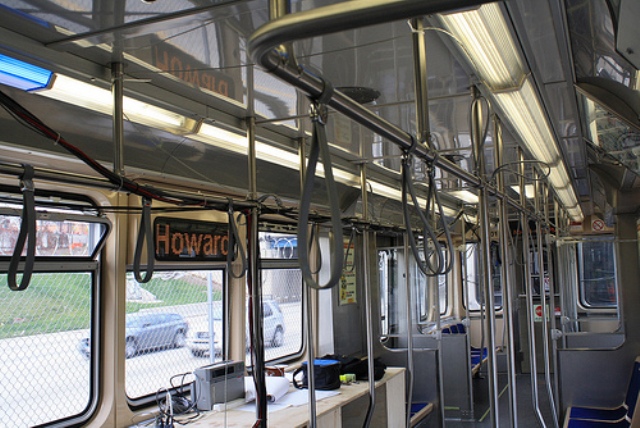CTA On New Rail Car Seating: Learn To Love It
By Chuck Sudo in News on Aug 28, 2012 3:40PM
Tribune transportation reporter John Hilkevitch follows up on his Monday article on Chicago’s latest controversy: the whining about aisle-facing seating of the new 5000 Series rail cars on the Green and Pink Lines.
Hilkevitch reached out to CTA and Bombardier Transportation, the Canadian company building the new cars, and found that building the new cars to accommodate the traverse-style seating of older CTA rail cars would be more expensive and delay production of the cars.
In short: tough shit.
CTA president Forrest Claypool told Hilkevitch there’s more to redesigning the cars than just the seating. “The entire support structure of the cars is related to the seating configuration,” Claypool said, adding that extra beams would need to be installed for traverse seating to work. A Bombardier representative told Hilkevitch that redesigning the seating arrangement in the new cars could be done, but would require extra tests and money, and that the trains were designed with CTA’s wishes for better access for wheelchairs and to accommodate bicycles and backpack-towing passengers better.
CTA and Bombardier hope they can get 40 years of use from the 5000 Series cars, which means that these cars could become the norm for future generations of Chicagoans. What’s fascinating here is that Hilkevitch is trying to frame the complaints about the new cars against CTA’s recently announced “de-crowding” proposal.
The high-capacity cars, which can hold up to about 120 total passengers, are inconsistent with the CTA's current philosophy of "de-crowding" trains, with a goal of carrying only 70 to 75 people per car. Claypool said what's important now is that the new cars provide many benefits to riders, from a smoother, more reliable ride to more interior space allowing passengers to enter and exit more easily.
Like John Kass’s argument about fees and tolls for bicyclists last week, we find Hilkevitch’s stance to be disingenuous. (Although Hilkevitch understands his subject better than Kass.) The new rail cars and their design to accommodate more passengers and storage should be seen as a benefit for the de-crowding plan, which calls for more overall trains on CTA’s rail system. The wider aisles of the new cars can better accommodate bicycles than the existing 3200 Series cars. Seventy-five people on the new cars means passengers should be able to spread out among the cars better and not mass in front of the doors of the cars—a major safety faux pas.
